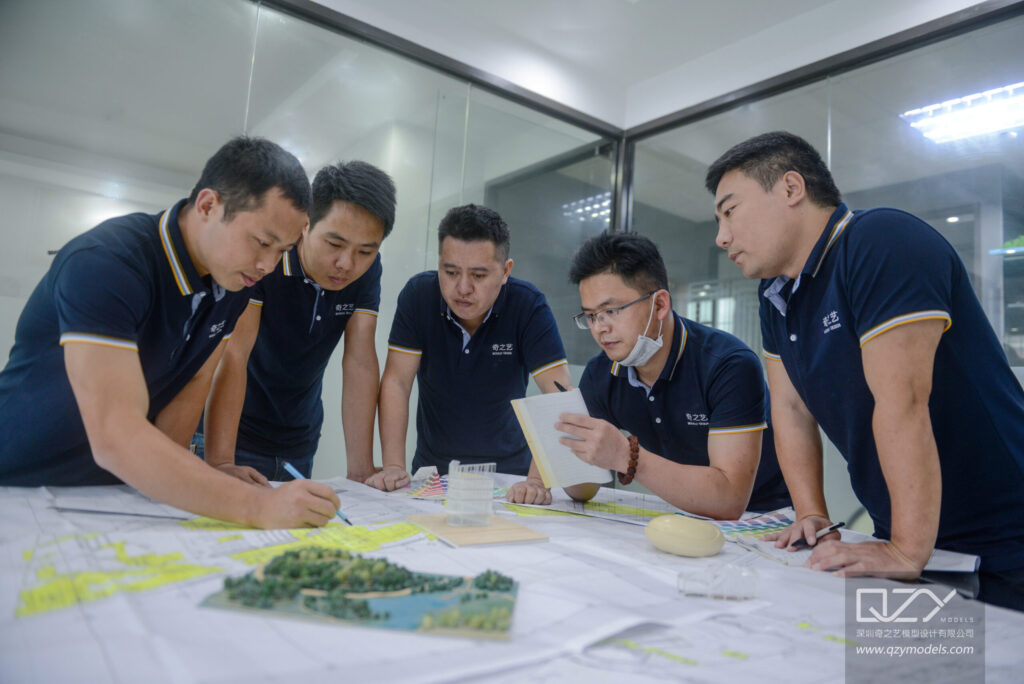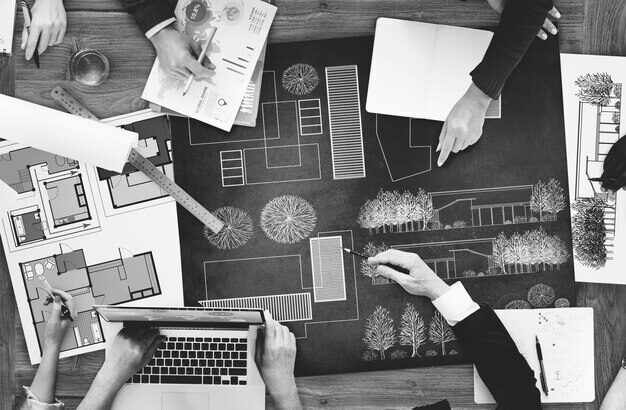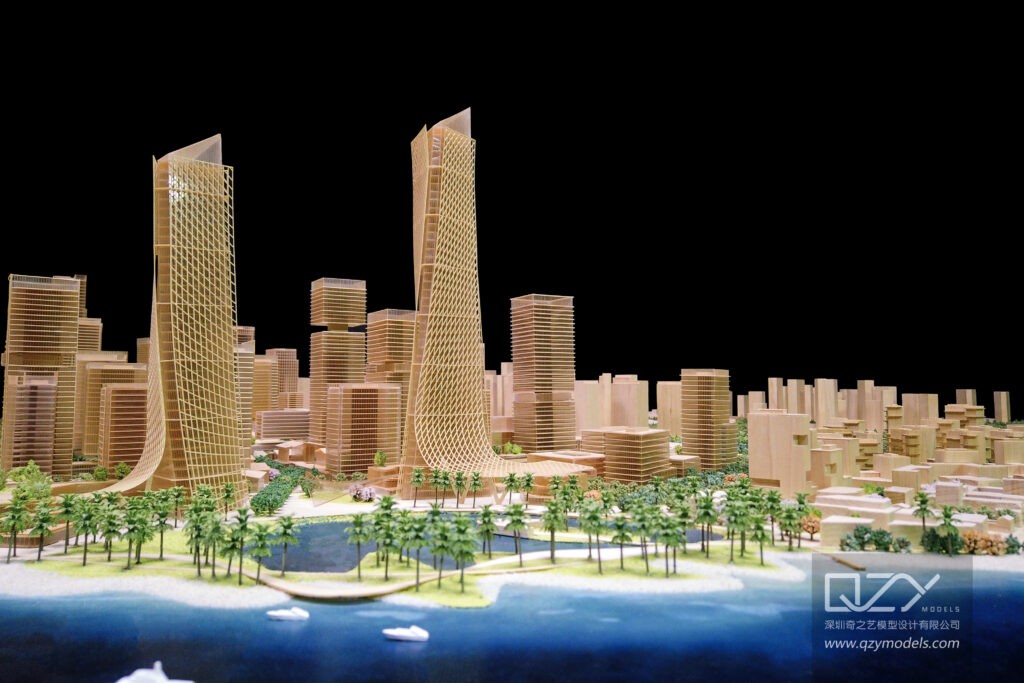Discover the top interior design trends shaping 2025, from sustainable materials and multifunctional furniture to the rise of smart homes and personalized spaces. This guide explores how these trends create functional, beautiful environments that enhance well-being and reflect modern needs, offering valuable insights for designers, architects, and homeowners alike.
What Are Interior Design Trends?
Modern interior design trends shape how people desire to design their living spaces. These guidelines determine our approaches to designing and decorating spaces as well as space utilization. Interior design trends direct the entire process which determines the selection of furniture and colors together with space layout and material choices for both homes and business environments. Trends evolve from society-wide demands so they become reflections of the cultural evolution along with technological advancements and modifications in lifestyle.
Several variables including global movements technological progress and environmental needs shape current interior design practices. Spaces developed through their expertise both serve current requirements and plan for upcoming requirements. People across both the design community and the homeowner sector refer to these trends to achieve spaces that are simultaneously contemporary practical and inspiring.
A variety of interior design trends are increasing in popularity during our approach to 2025. Sustainability emerges as one of the predominant trends that continues to increase in demand. The escalating environmental issues drive eco-friendly solutions to impact all aspects of furniture creation and material selection. Flexible areas that serve multiple purposes have become essential as more employees transition to remote work environments.
At present people demand personalized home spaces because they want their homes to reflect their distinct personal styles. There is a dual trend occurring where people dedicate more attention to emotional well-being and recognize that design actively impacts mental health. Technology development brings integrated smart functionality into interiors which leads to space efficiency as well as smart functionality.
10 Latest Interior Design Trends in 2025
The interior design trends for 2025 promise to bring innovative, fresh, and exciting changes to how we decorate and design our spaces. From the incorporation of natural elements to the rise of multifunctional furniture, here are the top 10 trends that will shape the interior design landscape:
1. Incorporation of Natural Elements
Biophilic design will build momentum at a strong pace during the year 2025. An ongoing interior design movement supports design approaches that join wood stone and plants to our room compositions. Natural materials that link rooms to outdoor environments improve both mental well-being and workplace efficiency through their stress-reducing abilities. Plants will be fundamental elements in this design approach since their presence brings environmental as well as visual advantages by clearing the air and enhancing well-being.
People are increasingly requesting interior designs that unify nature as a permanent architectural requirement. The interior design movement during 2025 will result in increased usage of reclaimed wood together with sustainable stone and bamboo materials. The selection of specific materials provides residential and commercial environments with serenity and foundation during 2025.
2. Rich Textures and Patterns
Modern interior design for 2025 focuses on returning rich textures and patterns as one of its key tendencies. The design trend of the past few years culminated in the present day where professional designers employ layered fabrics along with diverse textures and dramatic patterns resulting in visually stimulating rooms. Interior spaces will receive elegant and comfortable feelings through the usage of velvet and silk together with other rich materials.
After decades of absence patterns started to gain popularity during the year 2025. The upcoming design trend includes three types of patterns: geometric shapes alongside floral motifs and abstract artistic elements which will apply to furniture components and wall decorations and decorative items. The selected designs establish depth when adding visual importance to room settings. Homeowners should combine textures and patterns with neutral tones to prevent visual overstimulation in a room.
3. Modern Neutrals
Neutral tones establish their position as interior design basics which will get an updated contemporary style in the year 2025. Traditional basic white paint colors alongside creamy shades will mature into soft earth colors and various warm tones including grey and tan and entities inspired by natural environments. The tranquil sophisticated coloring of these hues functions impeccably for highlighting colorful accents and powerful design aspects.
The increase in modern neutral choices demonstrates how society wishes to have peaceful and straightforward environments. Small spaces benefit from these colors because they make spaces appear wider while bringing forth a relaxed atmosphere. This color palette enables designers to produce sophisticated and subtle designs which highlight furniture as well as artwork.
4. Rise of Multifunctional Furniture
As urban living spaces continue to shrink, multifunctional furniture will play a critical role in 2025’s interior design trends. Space-maximizing necessities will transform modern interior design because modular storage units together with foldable desks and convertible sofas become vital elements. People are seeking practical furniture solutions because their needs evolve between different activities.
Multifunctional furniture gains maximum appeal in limited size apartments as well as home office and studio environments. The design concept enables people to establish adaptable dwelling setups that maintain fashionable environments with maximum comfort. An increasing market demand for intelligent flexible furniture designs has prompted creators to develop superior multifunctional pieces which perfectly integrate into domestic interiors.
Designers and developers looking to incorporate multifunctional furniture into their spaces can benefit from the services of QZY Models, a renowned Model Making Company. QZY Models offers architectural model makers that create detailed interior design models, helping to visualize how multifunctional furniture can adapt to various living environments.
5. Customization and Personalization in Design
Personalization is at the heart of interior design trends for 2025. The current design trend focuses on personalized spaces because people desire interiors that show their essence which drives them toward customizable options for furniture and decor and room arrangements. Modern technology makes customized designs available to everyone while simultaneously decreasing their price through increased availability.
The goal of customization lies at the core of both bespoke furniture creation and wall treatment customization. Designers will provide rising numbers of adaptable and customized design solutions because people are actively pursuing spaces that express their uniqueness. Personized features in interior design produce authentic settings which serve a specific purpose as well as reflect the way inhabitants live.
One of the latest interior design trends is the increasing demand for custom models that reflect individual styles. QZY Models, known for its top-tier interior design models, offers custom models that help designers and architects create personalized spaces. Whether you are working on a home or a commercial project, QZY Models provides precision and innovation in model-making to help visualize your design vision.
6. Innovation in Sustainability and Recycled Materials
Interior design has moved beyond being a trend because sustainability now stands as its main aspect. The year 2025 will intensify the attention given to environmentally responsible methods. Designers now prioritize using recycled products which include wooden materials obtained from reclaimed sources and repurposed metals and biodegradable fabrics. Such materials make spaces more authentic by adding character and environmentally friendly at the same time.
Sustainable design will emphasize sustainable energy consumption through new innovative approaches. All residential and commercial designs will utilize energy-efficient appliances combined with LED lighting and environment-friendly building materials. Protecting our planet through eco-friendly design methods produces living spaces which are simultaneously environmentally beneficial and more sustainable and healthy for people.
7. Emotional and Mood-Based Design
Rooms designed to support emotional well-being are becoming more popular throughout 2025. Mood-based interior design will gain significance in future architecture because designers will start developing spaces whose design elements produce particular emotional responses. The atmosphere of relaxing environments will result from combining soft lighting that harmonizes with warm tones and comfortable furnishings in living rooms and bedrooms. Vibrant colors together with dynamic shapes will appear in creative areas alongside workspaces to boost creative output and productivity.
Environment design has found acceptance because it shapes how people feel emotionally. The specificity of design impact on mood helps designers establish environments which either promote relaxation, energize or push people towards focus according to the designated usage.
8. Use of Light and Natural Illumination
Interior design lighting strategies will emphasize natural light over all others during the year 2025. Room illumination through large windows and skylights and mirrors positioned specifically for reflectivity will increase natural light entry. Outside light adds both brightness to the area alongside improved well-being and better moods.
Designers plan to install energy-efficient lighting systems with LED and smart lighting technology which users can program to activate based on their needs at different times. The dual function of this control system enables people to shape ambiance needs through a low energy consumption method.
9. Further Evolution of Minimalism
Minimalism will progress beyond its current architectural style in 2025 by transitioning from empty spaces into beautiful inviting dwelling places. The room design will feature basic simplicity through angular shapes and useful furnishings and unobstructed spaces alongside various delicate textures and intimate color schemes and purposefully chosen focal objects.
This advanced version of minimalism equals comfort on an equal footing with simplicity. Minimalist spaces that incorporate soft touch materials combined with neutral colors as well as natural elements will create welcoming environments. Proper design focus will be on fashioning residential qualities while avoiding clinical attic or sterile effects.
10. Integration of Smart Homes and Technological Innovations in Design
Hubbed smart home systems have entered the mainstream because they will be considered standard household elements throughout 2025. Symmetric integration of technology will create modern residences by adding voice-command platforms and automated systems to control lighting and climate functions.
Smart home systems have become increasingly affordable which drives more people to seek installation in their homes. New interior design innovations offer both convenient solutions and power-saving benefits and security features. Through collaboration with technology experts interior designers will make sure technology features blend perfectly with the overall visual design.
Why These Interior Design Trends Matter
The interior design trends of 2025 matter because they reflect the shifting needs of society. Our interiors must change to suit the new challenges which arise from environmental matters and technology and also social environment transformations. Selected trends represent more than beautiful spaces because they embody practical aspects and emotional priorities and environmental requirements of contemporary dwellings.
Interior designers must follow new patterns because they need to deliver proper and creative design solutions. By embracing current interior design trends, designers can help clients create spaces that are not only functional and stylish but also emotionally supportive and eco-friendly. Builders of real estate properties and architects who adopt these trends in new construction better satisfy customers seeking sustainable and modern residences which maintain optimal energy efficiency.
As interior design trends continue to evolve, professionals like QZY Models, a leading Model Making Company with 20 years of experience, are crucial in helping bring these ideas to life. From interior modeling services to custom models, QZY Models provides high-quality architectural models that aid designers in visualizing complex concepts for modern spaces.
How to Tailor Design Solutions for Target Markets
Different target markets will have different needs and preferences when it comes to interior design trends. Designers must modify their solutions based on the unique requirements of their client base by using the following approach:
Interior Designers
The essential requirement for interior designers involves full awareness of customer-specific preferences along with individual needs. The three key forces driving design projects will be personalization alongside sustainability as well as emotional well-being. Designers create original functional spaces through their practice of offering personalized models and specific design solutions for customer requirements.
Architects
For architects, integrating these latest interior design trends into the architecture of a space is key. Multifunctional spaces become necessary in design so architects should plan for spaces to transform between various usages flexibly. The construction of modern homes requires incorporating both intelligent home technologies and sustainable building materials since they address modern buyer demands.
Real Estate Developers
The adoption of these trends by developers produces property development that matches the contemporary and sustainable and technologically advanced home preferences of modern purchasers. To satisfy up-and-coming homeowners developers need to spearhead these trends by adding natural components and multifunctional home elements as well as smart home systems into their plans.
Final Thoughts
As we look ahead to 2025, interior design trends will continue to evolve. Interiors will continue to evolve in 2025 because their design trends express both aesthetic goals and green-oriented principles of spatial transformation. Designers together with real estate developers and architects can create optimized spaces through their acceptance of these developing concepts and practices.
As we step into 2025, interior design trends are revolutionizing spaces to be more sustainable, multifunctional, and personalized. With companies such as QZY Models, offering professional interior modeling services and custom models, architects and designers can conceptualize and implement these trends with ease in actual projects. QZY, founded with over two decades of experience, continues to innovate in architectural model makers worldwide.
FAQs
1. What are the main trends for interior design in 2025?
The main home design direction includes two elements: natural items combined with rich materials and modern color schemes and flexible furniture and intelligent home systems.
2. How can I incorporate sustainability into my interior design?
Construction projects should use resources from recycling programs combined with careful selection of efficient lighting solutions and ecologically sustainable decorative items and furniture pieces.
3. What is biophilic design?
Biophilic design establishes natural room-to-nature links through the combination of natural elements with plants and materials as well as light optimization.
4. How does technology influence interior design for 2025?
New technology integration enables automated domestic systems and sustainable alternatives thus boosting space performance while making areas work more productively.
5. How can model-making services help with interior design trends?
Model-making companies like QZY Models provide high-quality interior design models and custom models that allow designers and architects to visualize and experiment with new trends, making it easier to execute complex concepts for both residential and commercial projects.







